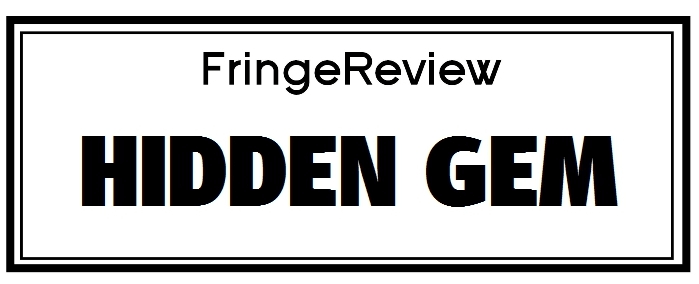Brighton Year-Round 2022
Chapel Royal in Concert Olga Paliy Piano Recital
Olga Paliy

Genre: Live Music
Venue: Chapel Royal, North Road, Brighton
Festival: Brighton Year-Round
Low Down
Olga Paliy gave a piano recital of CPE Bach’s La Folia, Victor Kosenko’s Gavotte, Vasyl Barvinsky’s Prelude in F#, Ihor Shamo’s Dance from his Ukraine Suite, Haydn’s Piano Sonata Hb No. 12 in A, and Chopin’s Ballade No. 1 in G minor Op 23
Review
Ukraine pianist Olga Paliy is involved in the International Interviews series, a recital programme that Richard Amey is involved with. She make a terrific debut at the Chapel Royal playing a programme that’s reminiscent of the wider catholicity of taste in Ukraine and dare one say it – Russia thirty years ago. CPE Bach and Haydn were staples then and it’s good to see them played alongside really interesting Ukraine pianists.
CPE Bach’s 12 Variations on “La Folia d’Espagne” in D Minor, Wq. 118, No. 9
is one of the baroque’s fascination with this late 15th century Portuguese folk-tune, with its nagging insistence on a mad dance. Variations on it stud the 18th century in particular, and of course Rachmaninov even called his 1931 work a Variations on a Theme of Corelli. Corelli made it famous in his 1700 set, and Alessandro Scarlatti, Geminiani and CPE Bach were just a few of the 18th century composers who followed him. CPE Bach’s came late, in 1778.
CPE Bach though seems to look forward to a world where for instance Muzio Clementi, even Beethoven were flexing a different kind of later classicism, and Bach’s obsessional side-slips and his own use of his ‘sentimental’ style – he was also exquisite in his choice of keyboards from clavichord through harpsichord to early piano – means his sense of colour and line are things difficult to capture on a modern grand.
But it must be – CPE can’t be relegated to period performance, and increasingly he’s played with sensitivity and tact, with non-period pianists appropriating him. Paliy emphasises the modern in this performance: Clementi and Beethoven seem waiting in the wings, and Clementi was active in this very year, competing in a famous play-off with Mozart. Paliy presses home the wayward edges of CPE’s classical style and shows too how much of it is less exquisite and minor than robust and prophetic. A terrific rush to the finish, too.
Viktor Kosenko’s Gavotte in B minor Op19/7 from 11 Preludes in the Form of Old Dances
Viktor Kosenko (1896–1938) is a fine composer who clearly died young and is finally beginning to get his due: in the UK on Toccata Classics, where this and other music has appeared in a series devoted to his main instrument, the piano.
This is one of the works he’s best known for, appearing in Volume 1 of the Toccata series, and dating from 1926, though 1927-9 is given too. It’s a homage to baroque dance styles and the neo-baroque obsession with Bach that percolated in the conservatoires. And of course the neo-classical of the 1920s fuelled an interest via France in the neo-baroque, jut here it’s given an original twist. This is a memorable, wistful memory of a gavotte, not just an evocation of one. B minor of course helps. You could easily hear it in a film, and it’s not so far away from the aesthetic of the very different Fazil Say in his Black Earth. Paliy relishes this as the opening of a trio played without a break.
Vasyl Barvinsky’s Prelude in F#
Vasyl Barvinsky’s life – from Lviv, Western Ukraine, he lived 1888-1963 but spent 1948-58 imprisoned his works, destroyed – was differently tragic. Most if not all his works have miraculously been rediscovered in the west and elsewhere, apart from his own last five years sent trying to recall, recompose and piece together his stolen output – some of which luckily was published.
This work, his Op 1 No. 2, is bewitching, faintly like early Scriabin away from the Chopin influence, memorable and faintly like the more rhapsodically still moments in Rachmaninov. He’s a composer only slowly emerging from the shadows he was thrust into, but with his music miraculously surviving.
Ihor Shamo’s Dance from his Ukraine Suite
Another composer, Kyviv-born Ihor Shamo (1925-82) though relatively short-lived was widely known known mainly for film scores and composing the unofficial Ukraine anthem at a time when it could never be official. His early Ukraine Suite from 1948 dates from his early adoption into the Composers’ Union. The fourth of four movements, ‘Dance’, is a rumbustious, tangy, quite advanced folk-dance, where a melodic spikiness – of the air of Prokofiev, Khachaturian, Shostakovich but far more genuinely folkloric than their work and driven with counter-rhythms and complex dance motifs. Paliy notes her young son identifies with this. No wonder. It’s fresh and catchy, and raises the chapel roof a bit.
Joseph Haydn’s Piano Sonata Hb No.12 in A
This is early (Haydn lived 1732-1809), and the work’s so short that some people think it’s only the first movement being played, Paliy notes. It’s early, dating from 1767 or before, and hasn’t the drive of some of the alter works, being a milestone on the development of the form. So no allegro for instance. It’s an Andante in A, at walking pace, an exposition gentle and unforced, that breathes a trill-like opening, delicate and melodically perky.
The Minuet that follows, also in A is contrasted with a Trio in the minor, which is far more exploratory moving at an Adagio pace and prophetic of the F minor Variations on the death of Mozart from 1792, and moves in a tiny rondo of variations of its own. The outer Minuet barely shifts tempo, but somehow in its call and refrain speeds up the same motifs in the Andante.
The Finale, also in A, is s trippy, more complex affair more prophesying Haydn’s alter work. Its stop-and-start and five-in-a-bar descant seems full of bird-calls, hardly unexpected in Haydn, but again never exploding the aesthetic of this piece.
Frederyck Chopin’s Ballade No. 1 in G minor Op 23
This is the wintry first Ballade Ballade from around 1835 (Chopin lived 1810-49) and Paliy makes something remarkable of it. Her way with this stormy work, rather an analogue of the weather outside the chapel, is to show what sonorities the work defracts instead of hurrying it, then pressing hard in a passionate traversal, blazing and seemingly personal, as the actual ballade-like narrative suggests just such tragedy. Then, instead of pressing for a kind of collapse at the end, where the pianist cascades down the keyboard, Paliy steps it down and again shows off the piano’s sonorities as she inscribes a more haunting, bleak finale, as opposed to a simple coruscation, effective as that is.
Altogether a stunning finale to a remarkable concert. Paliy will perform again in April, and would certainly be welcome here. The classical and romantic balance works beautifully with the lesser-known Ukraine composers, which are a revelation.








































